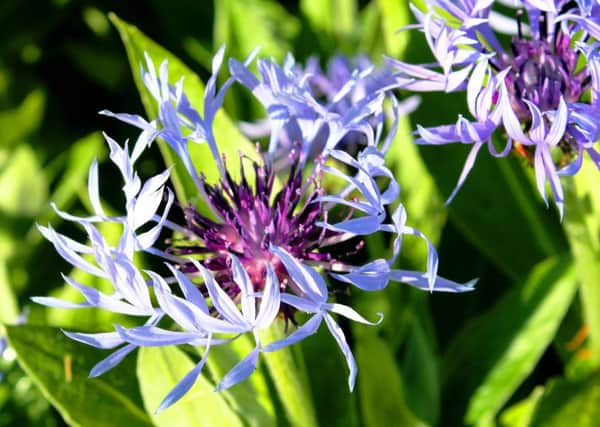Gardening: Pest to blest


When is a weed no longer a weed? When it’s a cornflower. The annual Centaurea was once a wheatfield pest, but now its perennial cousin is in fashion for beds and wild gardens where its unusual dark blue blooms catch the eye in early summer.
It likes any well-drained soil and plenty of sun, although it will also grow in semi-shade. In fact, It can grow just about anywhere, which is why escapees can be seen on roadside verges all over the country.
Advertisement
Hide AdAdvertisement
Hide AdBeware that it spreads quickly, so it’s best to lift and divide established clumps every two or three years in autumn or spring. Alternatively, pull up stray invaders and pass them on to friends.
Before it gets to that stage, enjoy it for those fascinating flowers, blooms that are much favoured by the cut-flower brigade. And here centurea proves its worth yet again – dead-head regularly and you’ll prolong the flowering period and encourage a second flush in early autumn.
In late autumn, when the plants are virtually exhausted, cut the stems down to ground level.
There are numerous varieties available for the garden, and they don’t all come in blue. “Steenbergii”, for example, produces big crimson blooms with contrasting white centres, while C “John Coutts” has even larger flowers, pink with yellow centres.
Advertisement
Hide AdAdvertisement
Hide AdIf it’s annual cornflowers you’re after, then, once again, there are plenty from which to choose, all of which like a well-drained soil and plenty of sun, although they will tolerate some shade.
From June till September, varieties such as C cyanus “Blue Boy”, a large-flowered cornflower in classic bright blue, will do your garden proud. “Blue Boy” is a tall-growing cornflower, with stems up to 36in in height, but there are forms that grow to just 12in tall.
Sow cornflower seeds outdoors from March to April. Choose a position in full sun on well-drained soil. When the seedlings are large enough to handle, thin them out to 6in apart.
Alternatively, grow cornflowers indoors from August to September for early summer flowering the following year. Sow the seeds on the surface of a good quality compost at a temperature of 18-23C (65-73F) and cover with a very fine sprinkling of compost or vermiculite. Make sure you don’t exclude light because it helps with germination.
Advertisement
Hide AdAdvertisement
Hide AdWhen the seedlings are large enough to handle, transplant and grow them on in cooler conditions until large enough to move outdoors.
Overwinter cornflowers plants in cool, light, frost-free conditions before planting out the following spring.